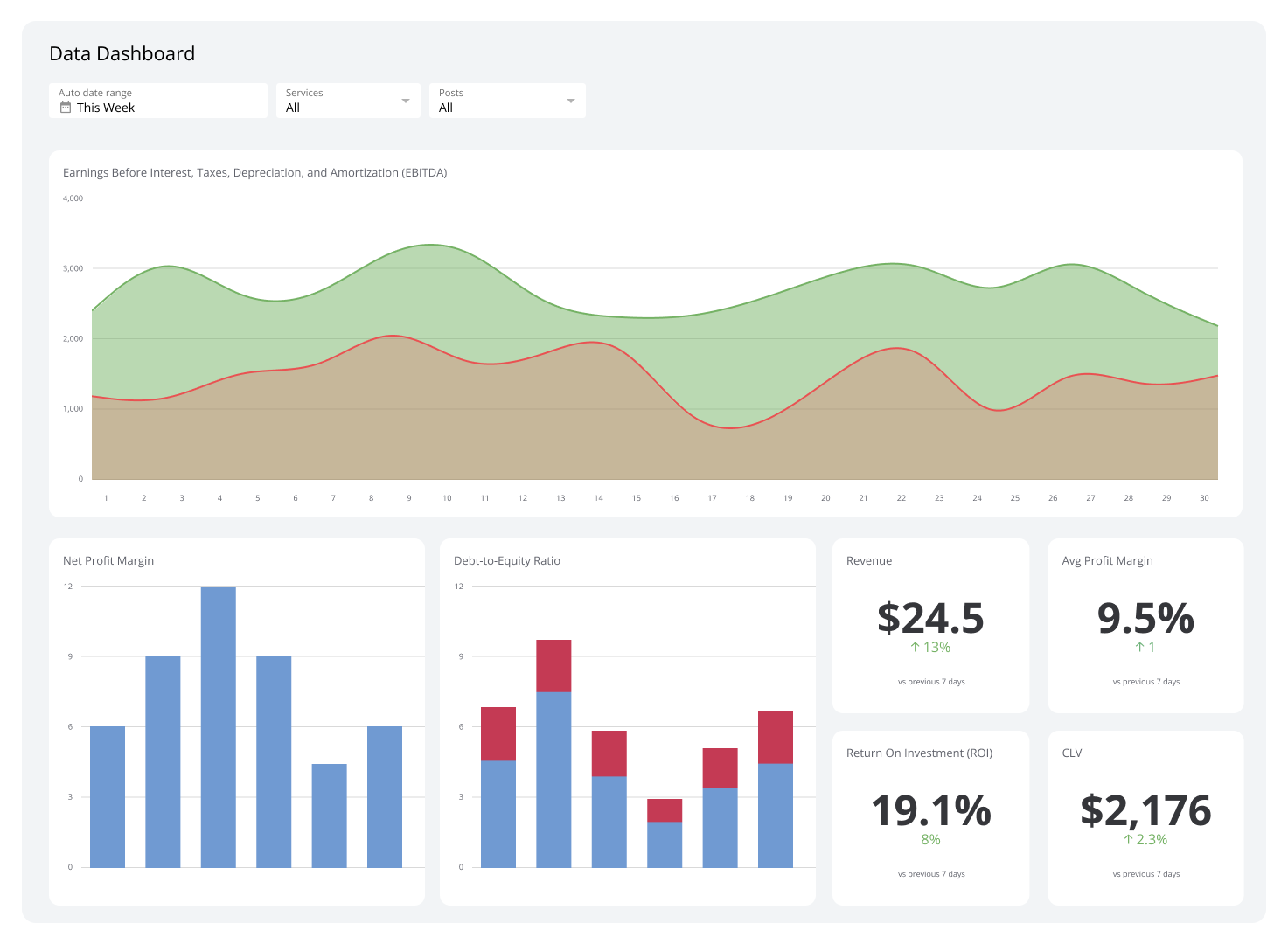Employee retention metrics: The 5 metrics you should be measuring

Published 2023-10-08
Summary - Employee retention is an important priority for organizations. The right set of employee retention metrics can help ensure your employees stick around.
Employee retention should be an essential priority for any organization.
Why?
Because replacing employees is an expensive, disruptive and time-consuming proposition.
But wanting to retain employees is one thing. Actually doing so is another.
That’s why you want to ensure you keep your finger on the pulse of how likely your employees are to leave their positions.
Tracking the right employee retention metrics – with help from the new data points available to human resource professionals – can help keep your employees satisfied and reduce the likelihood that they jump ship.
This post takes a look at how you can select the right employee retention metrics for your organization’s human resources strategy.
What is employee retention
Employee retention is a set of tactics and strategies aimed at optimizing your workplace to ensure employees are satisfied, qualified and prepared enough to excel in their current jobs rather than leave for another position.
A key metric for employee retention is employee retention rate, a metric calculated by subtracting the number of employees who have departed in a given period of time from the total number of employees then dividing that into the total number of employees.
Expressed as a mathematical equation, that looks like this:
(Total number of employees-number of employees who have departed)/Total number of employees
So, say you have a total of 100 employees. In one month, two of your employees leave. That would give you a retention rate of 98 per cent for that period.
(100-2)/100=0.98
What goes into employee retention
There are a number of factors that go into retaining employees.
Employee satisfaction is one of the most obvious. This part isn’t complicated: Employees who are happy in their jobs are less likely to quit.
But that’s not the only factor. Compensation, professional development opportunities and the overall strength of the economy are just a few examples of what goes into retaining key employees.
In other words: Employee retention is a complex matter. Finding the right metrics to measure is the best way to simplify it.
Why employee retention matters
Retaining employees is important because losing them has so many costs.
In general, losing employees hurts because:
It’s expensive
Hiring employees is costly. The average cost of hiring an employee is $4,129, according to a 2016 survey.
That’s why it’s so expensive when employees leave – you have to pay to hire someone new to replace them.
It’s also what makes an employee departing after a short period of time so much worse. Not only do you have to eat the cost of making the first hire, you also have to pay to hire a new person.
It's disruptive
For the most part, companies hire employees for a reason: Because they think they’re the best person for the job.
If that person quits, it means that your first choice for the position is no longer an option.
Not every hire is going to work out how you want them to. But when someone quits, it means that you no longer have the ideal person – the one you hired in the first place.
It's time-consuming
Hiring, onboarding and supporting employees in their first weeks on the job is a time-consuming process.
So you can imagine how devastating it would be to invest that time and then, after an employee leaves, have to do the whole process again.
Constant turnover carries a big cost in terms of lost productivity.
Which is why, in nearly every instance, it’s better to retain your employees when possible.
The importance of data in employee retention
Data didn’t used to play a big role in the goal of retaining employees in their current jobs.
But, now, that’s changed. Data plays a huge role in human resources strategy, particularly when it comes to employee retention.
Companies now have access to a wide range of data in measuring how likely employees are to depart their jobs.
In general, this falls into three categories:
- What happened: These are the most basic of basic employee retention metrics. In this category we have employee turnover, attrition rate – the sorts of basic metrics that present a backwards-looking view of what’s going on in a company.
- Why something happened: This is where it gets a little more complicated. It’s easy enough to stay on top of simple metrics like employee turnover (all you need to do is see how many people left during a given period of time). But trying to determine causation – why something happened – is a little different. Still, it’s an important component of employee retention. Let’s say, for example, that your company is experiencing high turnover. Trying to pin down the “why” behind that metric is going to be essential for reversing it. Maybe your compensation isn’t high enough. Or maybe morale is at a low point. Or maybe your culture needs a shake-up. The sooner you pin it down, the sooner you can go about fixing it.
- What’s going to happen next: Predicting the future is difficult, regardless of what field you are in. That’s no different in the field of human resources. But, with a little bit of data, you can start to determine when employees are most at risk of leaving. Say you’ve identified a lack of professional development opportunities as a key reason why employees are leaving. A reduction in spending on PD, then, might forecast a rise in employee turnover. Or maybe lack of vacation is the culprit. If vacation days used are down, then it’s a sign that your employees are burnt out. A jump in employee turnover could be on the way.
What matters when it comes to setting employee retention metrics
Low employee retention is bad...but so is 100 percent employee retention
No one wants a workplace with a low retention rate.
But an especially high retention rate is also an issue. This could signify a lack of dynamism in your workplace, where people are so comfortable that they aren’t willing to leave.
If there aren’t any departures taking place then that likely means underperformers or those who just aren’t a fit with the culture aren’t leaving.
Or they might not be motivated enough to move up to more senior roles, which means they likely aren’t improving their skills or putting in the extra effort at your company.
That’s not a great situation to be in, either.
The first few weeks are crucial
The initial period after an employee hired is essential for retaining them long-term.
One-third of new hires quit within six months. That same number knew, after just one week in their current jobs, if they were going to stay with the company for a long period of time.
That means your onboarding strategy – and the metrics for measuring its success – are very important.
Managers matter
The risk with employee retention is considering your company in the aggregate.
Getting company-wide numbers is important. But you also need to be able to drill down at a more micro-level to see what’s going on.
One of these areas is at the manager level.
I’m sure you’ve heard this aphorism: Employees don’t leave bad jobs; they leave bad managers.
This also applies to employee retention.
A good manager can make a world of difference in whether someone sticks around, or decides to head elsewhere.
Not all departures have the same impact
It’s never great to lose an employee.
But the fact of the matter is some employee departures hurt more than others.
And it doesn’t necessarily correlate directly with seniority. There are top-quality performers at every level and department of an organization.
Losing one of them is going to have a bigger impact on your organization.
Voluntary vs. involuntary is an important distinction
Not all employees leave an organization voluntarily. Some are laid off or fired.
Both voluntary and involuntary departures are bad for an organization.
But they are indicative of slightly different problems for an organization.
A voluntary departure suggests an issue with how an employee was treated after they were hired. An involuntary departure suggests that you missed something in the hiring process and the employee shouldn’t have been fired in the first place.
The problem is that this distinction isn’t captured in your employee retention rate, which treats all departures – both voluntary and involuntary – as the same.
When setting your metrics you’ll want to ensure you are doing everything you can to measure who is leaving voluntary, and who is leaving involuntarily.
Employee retention metrics worth considering
1. Employee happiness
Since every organization will measure this differently it is cheating a little bit.
But the point remains the same: Employee happiness is a key factor in whether employees choose to stick around or not.
How you measure it is up to your own ingenuity.
Maybe this is a survey, or the results of interviews with employees. Or it could even be a custom metric encapsulating a number of different factors.
The point is that, one way or another, you need to find a way to measure your employees’ happiness.
Your employee retention strategy probably depends on it.
2. Voluntary/involuntary turnover rate
As mentioned above, a voluntary departure is different than an involuntary one.
Tracking your voluntary turnover rate versus your involuntary turnover rate can help you to pinpoint the exact problem your organization is facing.
A high voluntary turnover rate suggests that your full-time employees aren’t impressed with something in the experience you’re offering, whether it be compensation, professional development or culture.
A high involuntary turnover rate suggests a problem with your hiring process – for whatever reason, you have ended up hiring employees who just haven’t fit with your culture.
Obviously employee experience and hiring practices are going to affect both metrics (employees who choose to leave quickly after being hired likely means your hiring process could be tweaked).
But these two different metrics should help you drill down a little more.
3. Talent turnover rate
Knowing your general turnover rate is valuable. But it doesn’t tell you something important: How valuable the employees who left were to your company.
Talent turnover rate helps you to answer a key question: Are your most talented employees leaving?
If the answer is “yes” than you have a big problem on your hands. If not then your turnover “issue” might not be as bad as you originally thought.
Obviously this will require you to do some additional work to evaluate how much your organization values each employee.
But it will be worth it when you calculate turnover rate.
4. New employee satisfaction rate
You can choose to define “new” however you like (maybe six months might be a good start?).
But the point is you’ll want to find some way to measure how well employees are adjusting to your workplace.
If they aren’t fitting in or feeling satisfied, then you could potentially be looking at bigger issues down the road.
Measuring new employee satisfaction rate can help head off those issues.
5. Retention rate per manager
A high turnover rate with a particular manager is a sign that something is wrong in the relationship between this person and their employees.
If you don’t investigate, it’s a safe bet this number is going to remain steady (or worse, increase).
See managers who have low turnover rates? Figuring out why might be a good idea. You might find some lessons for successful employee retention tactics that could be applied throughout your organization.
Human Resources Dashboard
If I’m talking about retention metrics, I would be remiss if I failed to mention HR metrics and KPIs in at least some capacity.
Human Resources is an essential feature to any company, and employee retention is a major metric involved in that sphere. So, while you’re thinking of monitoring retention, it’s definitely worth monitoring some other relevant HR metrics on your PowerMetrics dashboard.
Conclusion
Data has changed the world of employee retention.
Human resource professionals and managers no longer need to guess how they are performing when it comes to retaining top employees.
They can get an exact picture of what has happened and is likely to happen next – as long as they have the right metrics.
Mark Brownlee is a digital marketing strategist in Ottawa, Canada.





